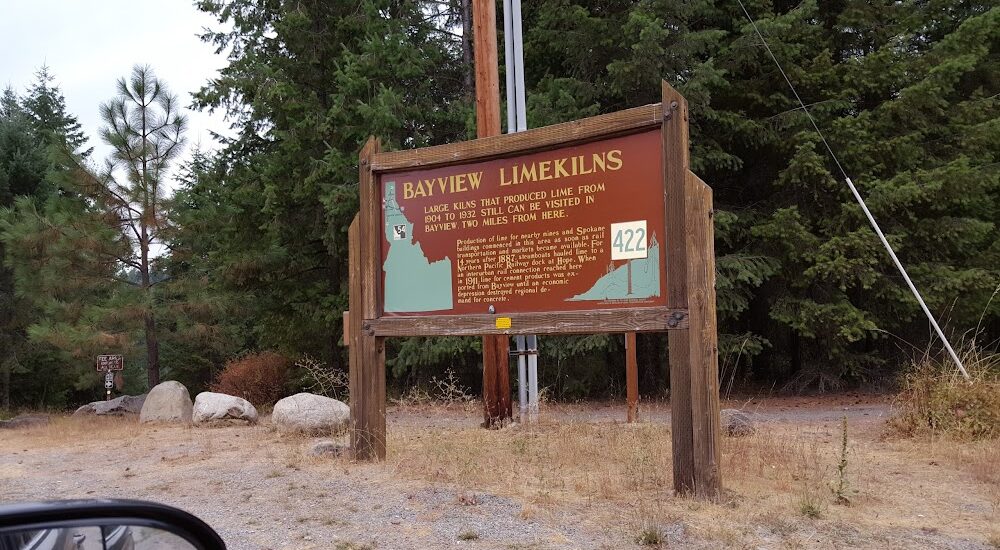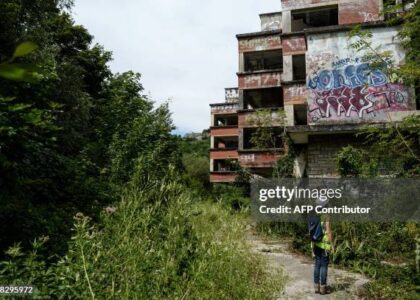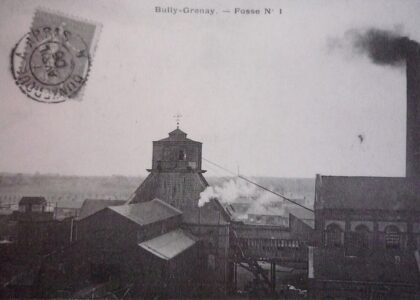Welcome to the Bayview Limekilns Historic Site, a fascinating relic of industrial history nestled by the tranquil waters of Lake Pend Oreille. Imagine, if you will, the bustling activity of the late 19th and early 20th centuries. The story begins in 1881 when limestone claims were first staked in the Lakeview area. These hills, rich with limestone formed from fossilized sea creatures of the ancient Cambrian Sea, became the heart of a burgeoning industry.
The Gray brothers were pivotal figures in this tale. In 1891, they established the Cannon & Gray Lime Company, constructing primitive kilns by digging into the hillside and lining them with stones. Picture these truncated cone structures, with layers of wood and limestone stacked inside. Once the wood was ignited, the kilns reached temperatures of around 1,000 degrees Fahrenheit, transforming the limestone into calcium oxide, or quicklime.
By the early 1900s, the lime industry had flourished, with two major Spokane companies consolidating operations. The International Portland Cement Company and the Washington Brick and Lime Company emerged as the primary players. ‘The Cement’ plant, built in 1912, and ‘The Portrock’ plant, constructed in 1921, employed about 100 local men. These plants crushed limestone before shipping it to Bayview, where barges transported it across the lake.
However, the Great Depression and changing market demands spelled the end for these lime kilns by the 1930s. A lack of market for agricultural lime and declining limestone quality made the business unsustainable. Today, the remnants of these kilns and plant foundations stand as silent witnesses to a once-thriving industry.
Beyond its industrial past, Bayview and nearby Farragut State Park hold military significance. During World War II, Farragut served as a naval training station, and its deep waters still host submarine testing, highlighting the area’s strategic importance.
As you walk among these historic kilns, consider the hard work and innovation of those early quarry workers. Their legacy is etched into the very stones of Bayview, telling a story of industry, community, and the ever-changing tides of history.






